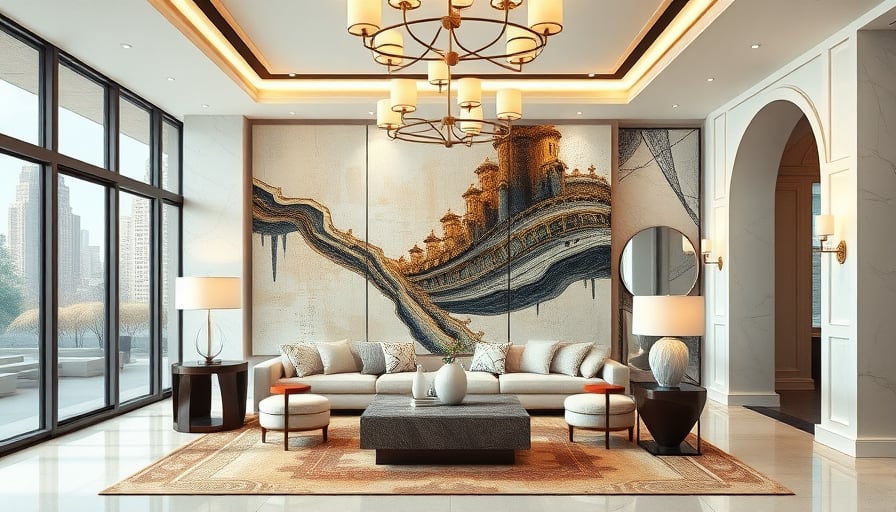LVMH’s Resilience Highlights Shifts in Luxury Consumer Dynamics
The recent performance of LVMH Moët Hennessy Louis Vuitton SE underscores the enduring strength of a diversified luxury portfolio in an era marked by rapid digital transformation and shifting demographic priorities. While the company’s shares rallied modestly on November 2—partly due to gains in an options strategy—the broader context of cautious optimism within the luxury sector offers insights into how evolving lifestyle trends can translate into tangible market opportunities.
Digital‑Physical Synergy in Luxury Retail
LVMH’s ability to blend online and brick‑and‑mortgage channels has become a case study in the industry. The firm’s flagship stores, housed within high‑foot‑traffic centres such as Simon Property Group’s portfolio, benefit from stable leasing demand that now incorporates experiential design and omnichannel integration. By offering curated in‑store experiences complemented by sophisticated e‑commerce platforms, LVMH meets the expectations of a generation that values both authenticity and convenience.
The continued investment in digital infrastructure—augmented reality product visualisation, AI‑driven personal shopping assistants, and seamless payment solutions—creates a frictionless consumer journey. For retailers, the lesson is clear: a hybrid model that leverages physical presence for experiential depth while harnessing digital touchpoints for accessibility can capture a broader customer base.
Generational Spending Patterns and Cultural Shifts
The current wave of luxury consumption is increasingly driven by younger cohorts—millennials and Gen Z—who prioritize brand purpose, sustainability, and cultural relevance. LVMH’s portfolio, which spans wine, cognac, perfumes, cosmetics, and apparel, offers a diversified canvas that can be tailored to these values. For example, the growing demand for ethically sourced ingredients in cosmetics, or the cultural cachet of heritage brands in fashion, aligns with the aspirational yet conscientious nature of these consumers.
Moreover, cultural movements such as the resurgence of craft craftsmanship and the emphasis on “slow luxury”—where quality and story outweigh quantity—provide fertile ground for brands that can articulate heritage within a contemporary context. LVMH’s strong heritage across multiple sectors positions it well to narrate compelling stories that resonate with culturally attuned shoppers.
Real‑Estate Dynamics and Retail Experience Evolution
Simon Property Group’s optimistic full‑year outlook, driven by resilient leasing demand, signals that physical retail remains a viable and attractive asset class, especially for luxury brands seeking experiential retail environments. LVMH’s flagship stores serve not only as sales points but also as brand ambassadors, reinforcing brand prestige in curated spaces. As shopping centres evolve into lifestyle destinations, the opportunity for luxury retailers to create immersive experiences—combining gastronomy, art exhibitions, and bespoke services—has become a differentiator in a crowded marketplace.
Forward‑Looking Market Opportunities
Omnichannel Investment Brands that deepen their digital ecosystems—integrating AI, data analytics, and personalized content—will capture higher conversion rates and foster stronger brand loyalty among tech‑savvy shoppers.
Sustainable Luxury Capitalising on the cultural shift toward sustainability can open new product lines and partnerships, while reinforcing brand authenticity and social responsibility—key drivers for younger consumers.
Experiential Retail as Differentiation Physical stores that deliver unique, culturally relevant experiences will continue to attract foot traffic, especially in premium shopping districts. Collaboration with local artisans and cultural institutions can enhance this appeal.
Demographic‑Targeted Marketing Segmented campaigns that address the distinct values and spending patterns of millennials and Gen Z—such as digital storytelling and social‑impact initiatives—will strengthen engagement and market share.
Real‑Estate Partnerships Luxury brands should seek long‑term leases in high‑visibility, lifestyle‑oriented centres, ensuring that their retail presence aligns with consumer expectations of convenience, exclusivity, and cultural relevance.
In summary, LVMH’s sustained resilience amid market volatility exemplifies how a diversified luxury portfolio, when coupled with strategic digital innovation and experiential retail, can adapt to and profit from changing consumer landscapes. For investors and industry stakeholders, the takeaway is that the intersection of digital transformation, demographic evolution, and cultural relevance remains a potent engine for growth in the consumer sector.
